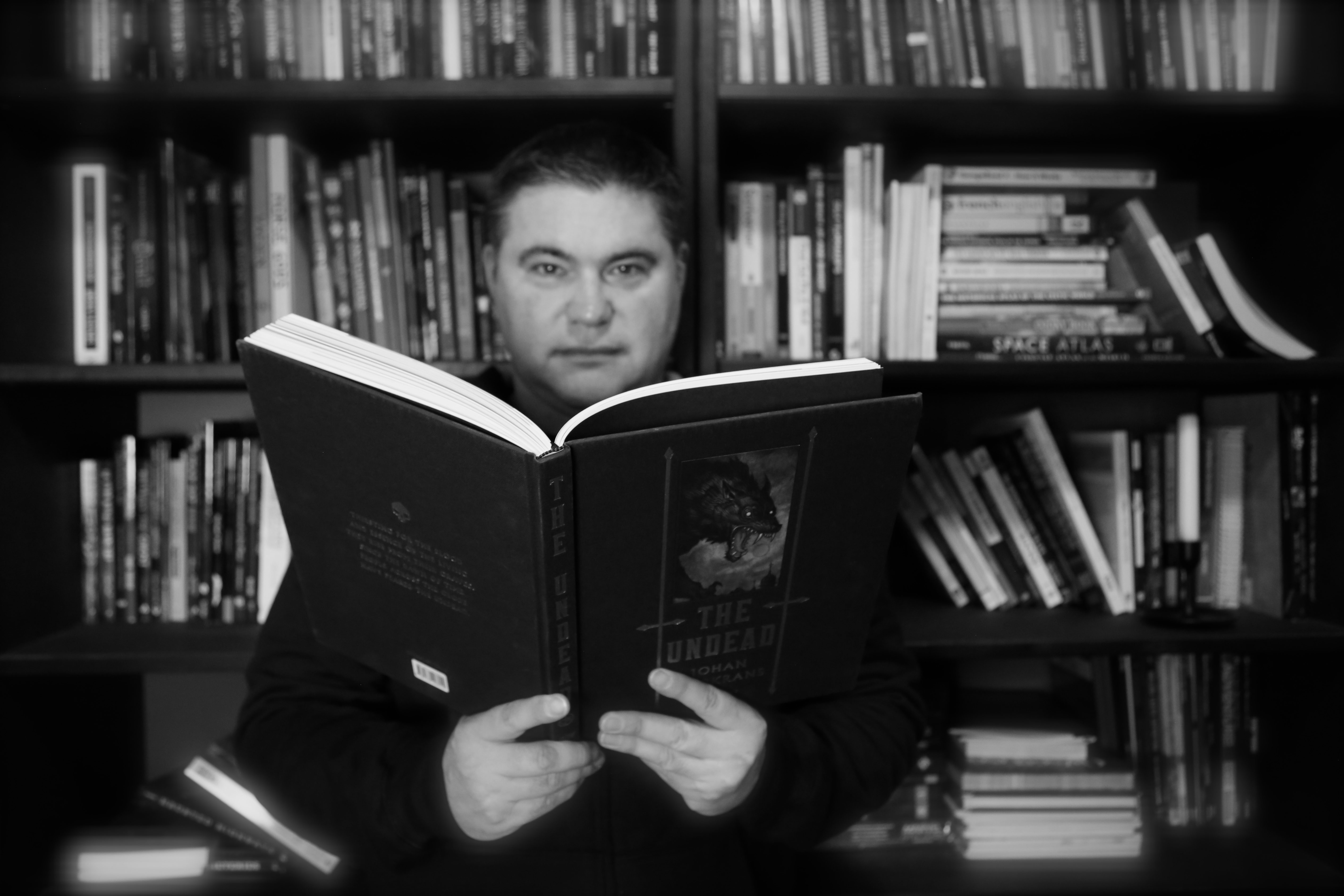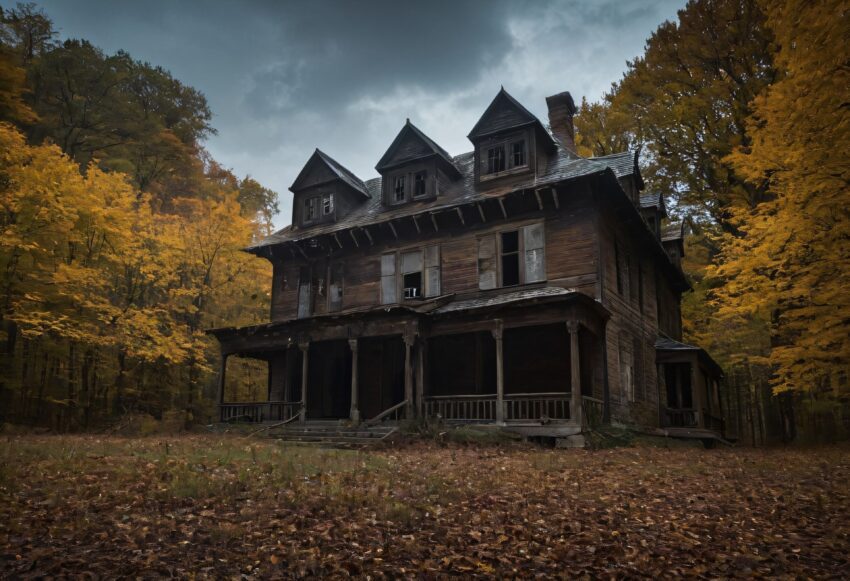
The Grave-To-Ghost Research Process
Hi gang. I wanted to share my favorite research method for ghost hunting. It’s called “Grave-to-Ghost” because it’s starts with a departed person (grave) and ends with a ghost (or ghost hunt). In 5 steps, you can have informative and credible research to inform your ghost hunt. Get the scoop after the jump.
Audience: Newbie ghost hunters (less than 1-year experience)
Table of contents
5 Steps To Thorough Haunted Research
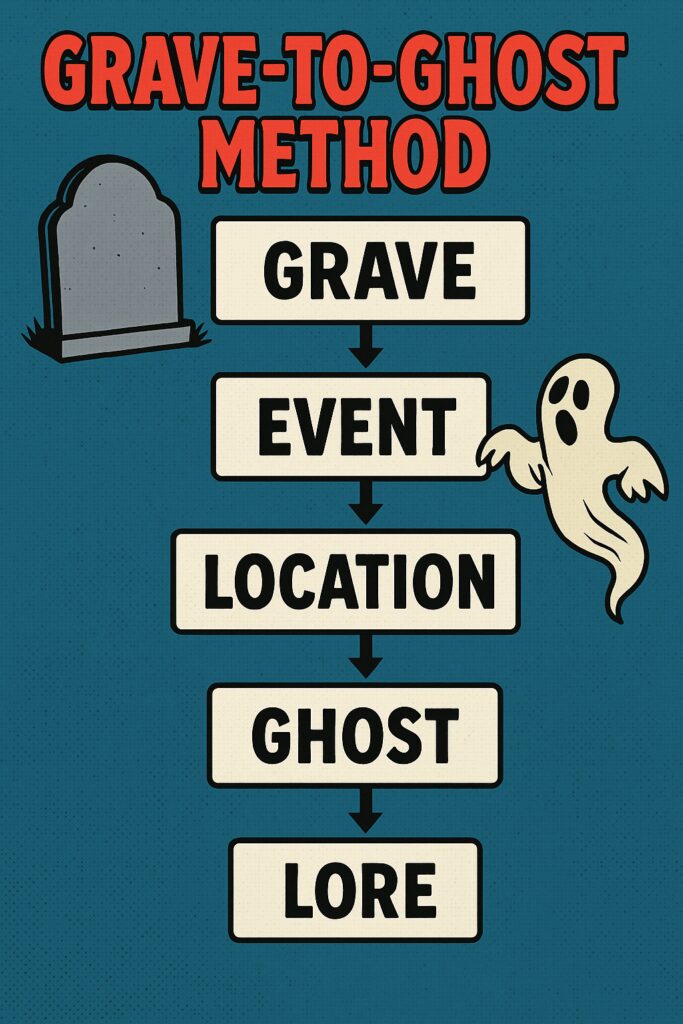
While there are 5 steps in the Grave-To-Ghost research process, you still need to do the sleuthing and fact-checking at each step to make sure you got it right. That means using credible sites to find documentation. Without documents, you’re just chasing spooky stories and urban legends.
Here are the 5 steps to follow in brief. We’ll flesh them out later in this post.
- Grave
- Event
- Location
- Ghost
- Lore
Before you start: I want to stress that you don’t have to go in this order. For example, you may have leads for Step 3: Location. It’s perfectly alright to start there. Just don’t forget to go back to the previous steps and fill those haunted gaps.
Now, let’s get into the details, and I’ll use Captain Frank Thornton from my Fort Worden documentary to help illustrate the method.
Step 1: Grave
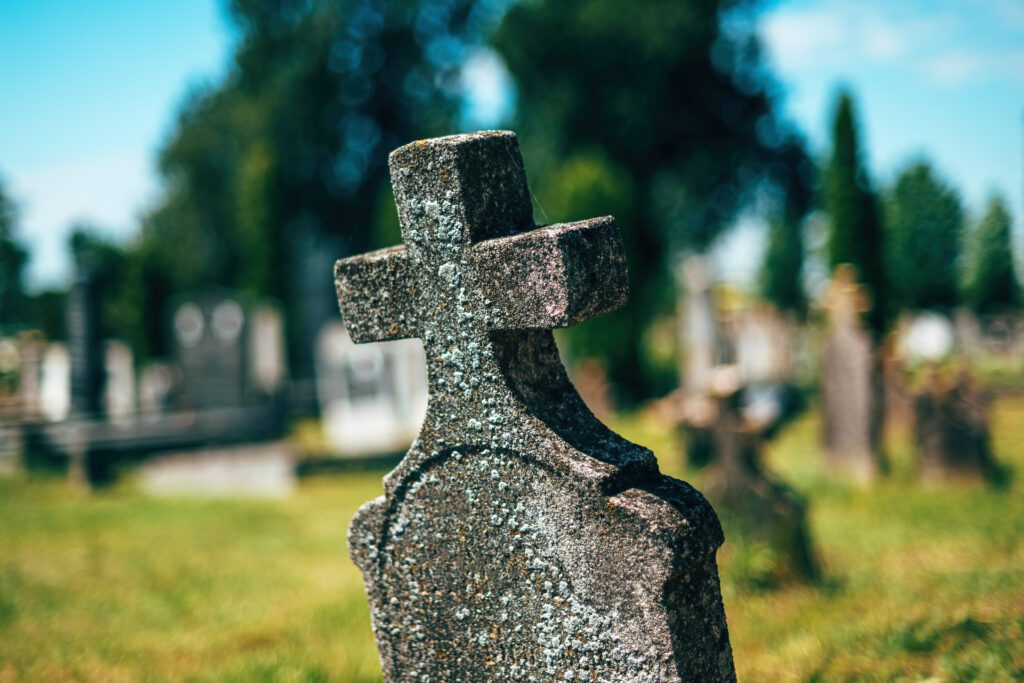
Every ghost story starts with a death. So, begin with the body. When you start looking for a person to research, start with some death records or a cemetery. A name and date of death goes a long way in researching their lives.
Here are some things to look for because they make for interesting cases:
- Unusual or isolated graves (especially graves outside the cemetery/graveyard fence. That usually means the person couldn’t be buried on hallowed ground for some reason. And that’s a mystery to solve!)
- Tragic or sudden deaths (ghostly theory states these unfortunate deaths charge the area with spectral energy)
- Names that match a rumored ghost (There’s a reason why that name matches an urban legend, and the mystery builds)
- Strange inscriptions on headstones (These are clues to some secret or horrible event)
Resources:
- Find A Grave
- Chronicling America (Library of Congress newspaper archives)
- Ancestry
- Genealogy Bank
Experience:
While researching deaths at Fort Worden, one name stood out. Captain Frank Thornton. He died unexpectedly in August 1911. Captain Thornton passed away in the building we rented for a ghost hunt (just by chance). So, now I’ve got a confirmed death, date and location. To get more about his past, I used Ancestry.com to find documentation, including his death records and military records. Having this info on hand makes communicating with his spirit much easier.
Note: I’ll make a future post about finding haunted clues in a cemetery or graveyard. Understanding graveyard symbolism can generate a lot of spectral leads.
Step 2: Event
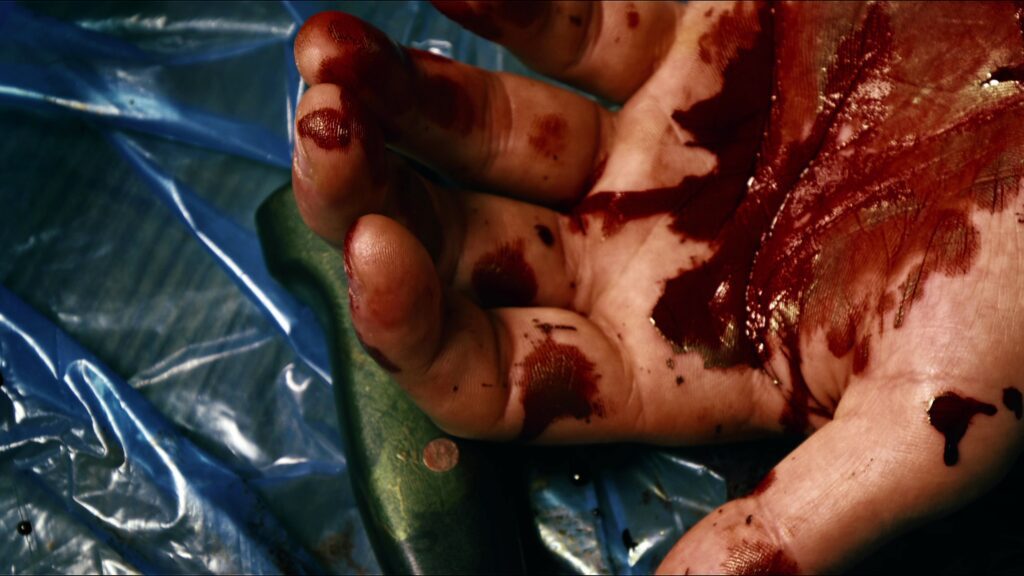
Now that you’ve got a name, figure out what happened to them. How did they die? In general, a traumatic ending leads to a ghost, but that’s not always the case. In my experience, less than 1-in-20 tragic endings generated a ghost.
When it comes to tragic endings, look for these events:
- Murder
- Suicide
- Fires
- War
- Epidemics
- Natural disasters
- Accidents (like plane crashes, car crashes, etc.)
… and anything dealing with romances gone wrong. Love, a powerful emotion, can also lead to tragedies.
Search through:
- Historic newspapers
- Local history books
- Town archives
- Old crime blotters or coroner inquests
Dig until you find the why behind the haunting. Most active spirits didn’t die peacefully in bed. There’s always a reason they’re still here.
Resources:
- Newspapers.com
- NewspaperArchive.com
- Chronicling America
- GenealogyBank
- Your local historical society’s dusty back room (seriously)
Experience:
I didn’t know how Captain Thornton died at first. The news articles listed an accidental death, but the facts didn’t match up. He wasn’t just found lying on the floor in his quarters. He was found in a chair … next to an empty bottle of a sleeping aid … and a half-consumed bottle of vodka.
Captain Thornton ended his own life.
As I read his military records, it turns out he faced disciplinary proceedings for getting into fights with locals. His peers stated the captain thought his career was over. And being discharged would be the worst thing that could happen to him. He loved serving his country. So, a day before the proceedings, he ended his life.
The records list “accidental death” to ensure Captain Thornton would get a proper military funeral … and his record would remain in good regard, so his family would receive his military benefits.
Step 3: Location
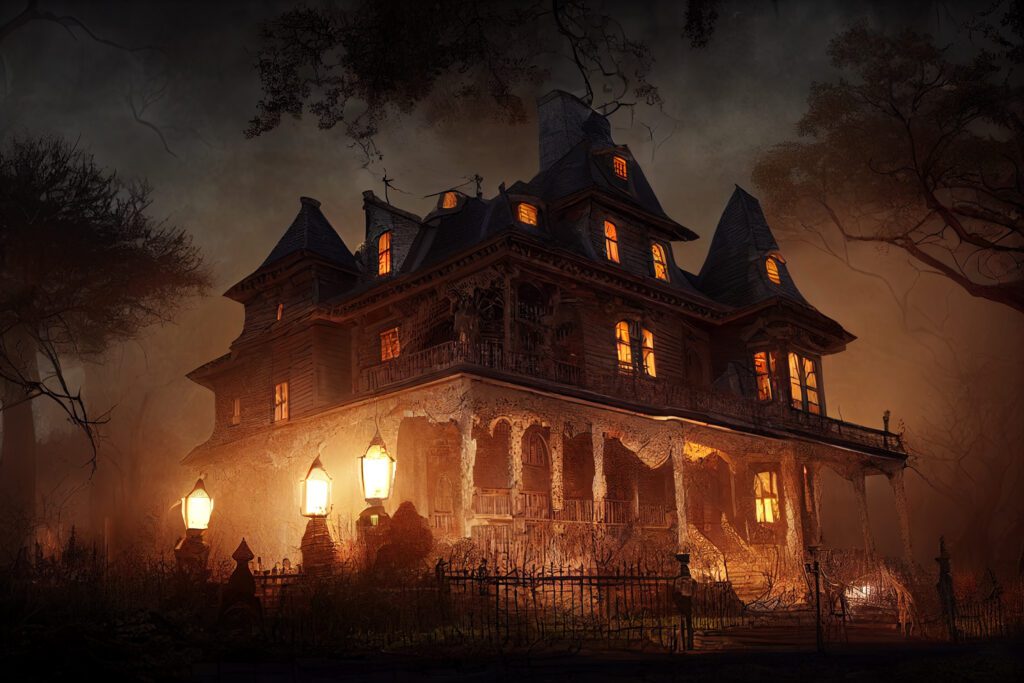
Ghosts don’t haunt at random. They stick to places tied to their passing. Find out where your spirit died, lived, or experienced something terrible.
That could be:
- A house
- A field
- A bridge
- A hospital, asylum, prison … you get the idea
Use historical maps, property records, city directories, or old fire insurance maps to track how a location changed over time. You’d be surprised how often a “new condo” sits on top of a torn-down tuberculosis ward. Just look at the former Danvers State Hospital, a notorious asylum over 100 years ago, that’s now an apartment complex with nearly 500 units. I wonder what’s lurking in the basement …
Pro Tips:
- Search newspaper archives for the property, not just the person
- Use Sanborn Fire Maps for old building layouts and addresses (It’s GOLD!)
- Cross-check addresses from the departed person’s time of death with a modern GPS app like Google Maps
Experience:
At this point, I knew that Captain Thornton died in the unmarried junior officers quarters for captains down to 2nd lieutenants. But I didn’t know what that translated to for the modern building names. Fort Worden, once it changed hands to a state park, had most of the buildings renamed. After sleuthing around some history sites, I found the quarters were now called “The Bricks,” named for its red-brick construction. I compared that to the news reports and military records to see Captain Thornton lived in the unit on the first floor, east side of the building. That’s now unit 16A: The exact unit I had rented … and that was by chance!
Step 4: Ghost
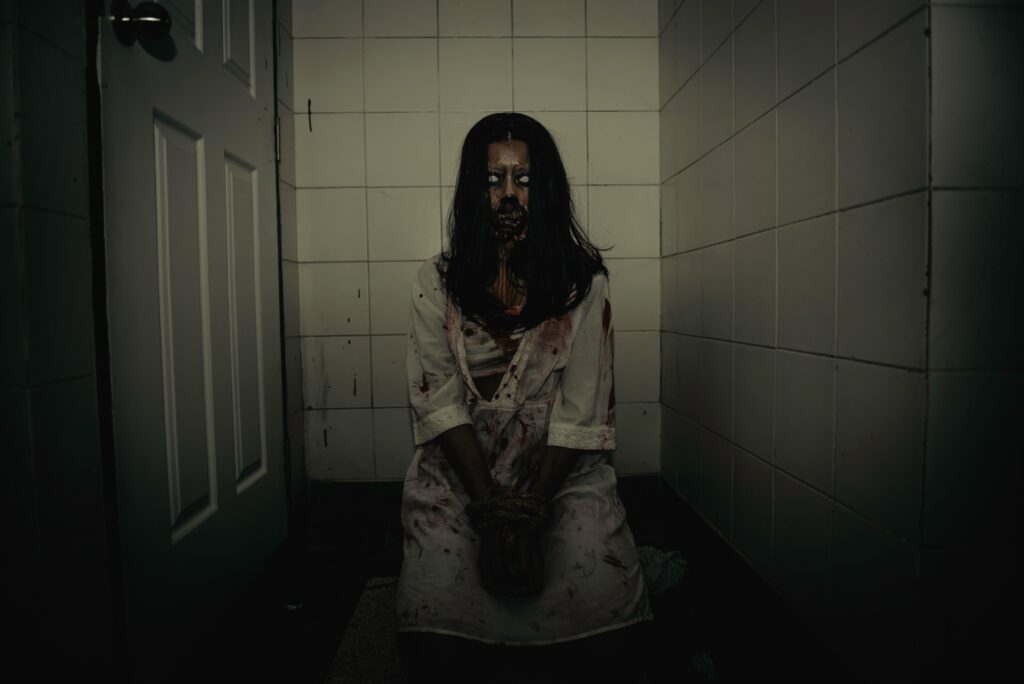
Okay, now comes the fun stuff – gearing up for the ghost hunt. At this point, you plan for your investigation. But you don’t have all the ghostly shenanigans recorded. It’s hard to choose the right ghost hunting tools or prep EVP questions if you don’t know what kind of spirit you’re dealing with.
What’s the current paranormal activity? Does the ghost match your historical person? What do the locals say? What do other investigators report?
Activity:
- Appearance: Shadow figure? Woman in white? Full body?
- Behavior: Helpful? Angry? Repeating past events?
- Sounds: Whispers? Footsteps? Knocking?
- Smells: Perfume? Cologne? Cigar smoke?
- Touch: Cold spots? Heebee Jeebees?
- Environmental: Lights flickering? Power failures?
- Timing: Same hour every night? Only on the death date?
Resources:
For lesser-known haunted locations and ghosts, reports may be scarce, and you don’t have much to go on. In those cases, you can turn to the Internet … but be wary. There’s a lot of misinformation out there. Especially in forums. Look for at least 3 sources that corroborate the activity. If you don’t find anything, don’t feel bad about it. Just think of yourself as an explorer documenting new ghostly activity.
Check these sources out:
- Online ghost forums (Reddit has many paranormal threads, many with hyperbolizations or faked videos)
- YouTube ghost hunts (Most are for entertainment, but you could learn something about the ghost)
- Paranormal podcasts (This is where you’ll find a lot of deep dives into haunted locations and the spirits that reside in them)
- Eyewitness interviews (Use caution and ask the same questions in different ways, like a detective, to see if the story changes)
Write it all down. Patterns will emerge. That’s how you go from random spook story to credible haunting profile.
About Eyewitnesses: Here’s the truth you should know about witnesses. They get it wrong nearly 75% of the time according to Scientific American. Human memory fails as time passes between an incident. So get those interviews in as soon as you can. You can bet a ghostly witness, who’s freaking out, will have a higher fail rate.
Experience:
There wasn’t much documented about ghostly activity at The Bricks, nor with Captain Thornton’s ghost. We approached the ghost hunt in an exploratory way. So, we leaned heavily on Fort Worden’s history and documentation about the captain.
We asked questions about his military service and personal life … and boy did we get responses on our gear. But then things changed … a twist … when it seems like child spirits manifested.
It turns out, Fort Worden became a juvenile center from the 1950s-60s, and we may have been talking to kids as well as nurses, based on the activity we collected. The Bricks became quarters for the nurses working at the juvenile center.
Be prepared to pivot. Ghosts don’t always interact the way you think they will. And you may not be talking with the spirit you prepared for.
Step 5: Lore
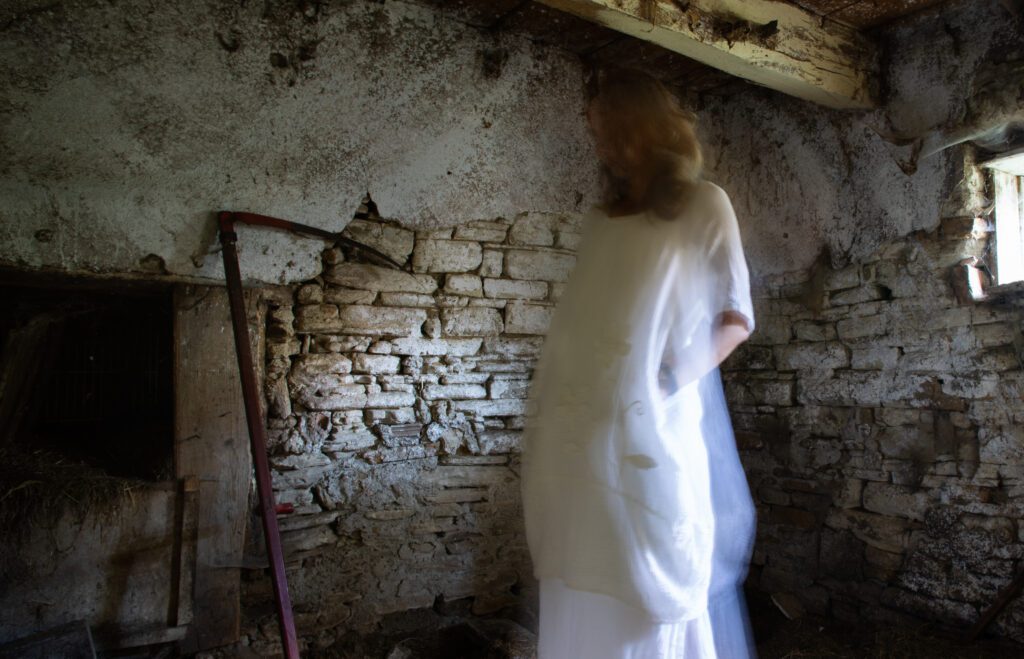
Folklore helps shape your expectations and explain behavior patterns. It can even help you predict new phenomena during the investigation.
You’ve now got the history, the ghost, its manifestation details, and access to a haunted place. Now, we can look at local folklore for some additional context. Because even with urban legends and campfire tales, there’s a kernel of truth behind it. And that could add more about the departed’s life.
Many hauntings follow cultural patterns. Maybe your ghost is:
- A White Lady (often tied to betrayal or lost love)
- A Phantom Hitchhiker (common near fatal car crashes)
- A Shadow Person (something ominous may have happened)
- A Death Omen (think banshees, black dogs, and ghost trains)
These entities could give you a new angle on your research if you haven’t uncovered it. A White Lady could mean a suicide or murder as the event that triggered your ghost. Hitchhiker? A terrible accident killed someone far too young. You get the idea.
Folklore Resources:
Start with your local legends. Those tales will give you more focused information to verify. A simple search may pull back stories you’ve never heard before.
As for books, I like to use these two:
The Vanishing Hitchhiker by Jan Harold Brunvand
The Haunted by Owen Davies
Putting It All Together
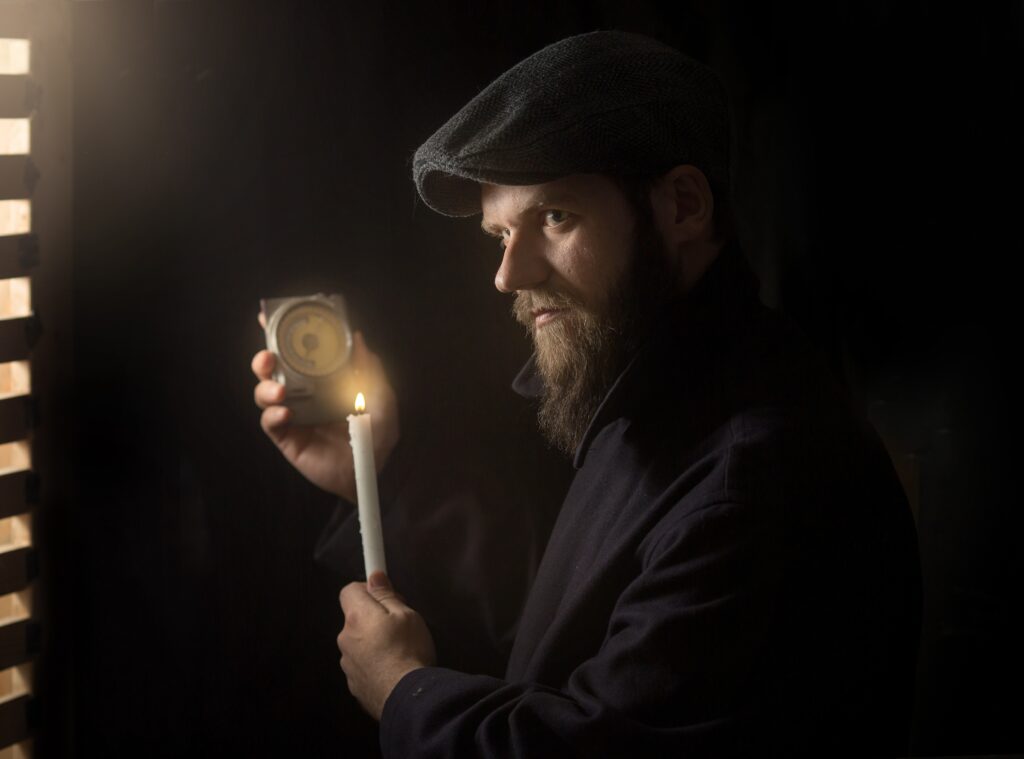
When I head out on a ghost hunt, I don’t just bring my gear. I bring a haunted case file. And the Grave-to-Ghost Process builds it:
- Historical name + death info
- The traumatic event
- Location research with maps or property records
- Ghost reports and patterns
- Lore that frames the whole story
It’s like solving a cold case with a paranormal twist.
Anyone can wander around in the dark with an EMF meter and spirit box. But if you want real results, like ghosts actually communicating with you, you need to understand who they are, what they want, and why they’re still here.
The Grave-to-Ghost Research Process helps you do just that.
It makes your investigations smarter, your ghost hunt reports more credible, and your encounters verifiable.
Note: Jake isn’t sponsored by the resources (like Ancestry.com) or book publishers he mentioned in this post. He paid for them with his own money. There’s no expectation of a positive endorsement by him.
Do you have a favorite research method? What is it? Share in the comments below.
Thanks for reading Ghostly Activities. Much appreciated and take care!
